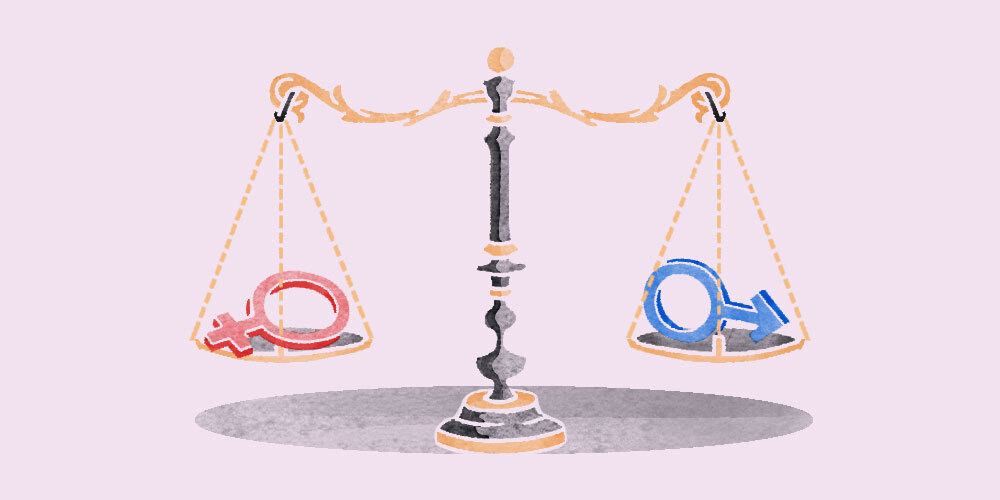Why women in leadership still face the invisible ‘glass cliff’

In mid-May, Twitter’s new CEO Linda Yaccarino, a longtime media executive, took the reins of the social media platform that has faced consistent criticism since Elon Musk bought the company last October. Since Musk took over, 80% of the company has been reduced.
On the surface, her appointment seems like something to be celebrated. She is the first woman to be Twitter’s CEO, which helps boost diversity and inclusion efforts at the company. However, experts argue the hire merely brings another woman onto a “glass cliff.”
A relative of “glass ceiling,” “glass cliff” is a metaphor for the invisible social barrier that puts women in a position where they have a high likelihood of failure.
A Harvard Business Review study, published in 2011, found that there is a so-called “status quo bias” that exists when it comes to how companies are led: that as long as a company headed by men performs well there is no need to change its pattern of male leadership. Only if they have steered the company into trouble, is a switch to a female leader preferred.
While it’s open to interpretation whether Yaccarino might be on a glass cliff, there have been a number of other women who have already experienced this before her. In October 2017, Mary Barra became the first woman CEO of General Motors, at a time when the company was enduring serious financial issues. When GM stock prices plummeted further, Barra was held responsible for the firm’s poor performance, despite it beginning before she was in place. Even more recently, Jill Ann Soltau, a 30-year veteran of the retail merchandising industry, was brought in as the company’s first woman CEO, to right the ship of the already-struggling JCPenney company from October 2018 through December 2020. The list goes on in both big and small companies.
It’s a bit of a bait and switch tactic. The job is advertised as an amazing opportunity for the woman, where they can grow and be the first one in a major role. However, they’re actually inheriting major problems where there is higher likelihood of failure and a greater risk for them and their career. While men have been in this position before too, women leaders are especially at risk when they don’t have as much access to mentors or sponsors because the number of women in the C-suite is still not comparable to the number of men. As gender equality improves, the glass cliff should become less apparent, but we’re still not there yet.
“It’s a very difficult situation to be in and I have seen it happen quite a lot in industries I’ve consulted in,” said Wendy Dean, CEO at U.K.-based business solutions company Strategi Solutions. “The woman is desperate to get on the board, but knows they’re being handed a challenge.”
Dean says that it’s almost a discriminatory practice to associate the woman with the failure, instead of the men that came before her and put the company in that position in the first place.
She recommends that before agreeing to a position, there are clearly identified and realistic objectives and KPIs so they know what to expect of them. If they’re not achievable, they should rethink accepting the position.
However, it’s a difficult decision when women are consistently outnumbered. For example, one-third of women in tech report that men outnumber them 4:1. Lupe Colangelo, interim head of talent placements at General Assembly, argues that the glass cliff is especially pervasive in tech, where women leaders like Susan Wojcicki, CEO of YouTube, and Marne Levine, Meta’s chief business officer, announced their departures earlier this year.
“You could be doing everything right as a woman developing your career and navigating the workplace and there could still be biases and structural inequities in the way that prevents you from reaching your goals in comparison to your male counterparts,” said Colangelo.
Colangelo suggests other solutions like expanding resources and budgets to pay for additional training that helps female leaders meet the growing demands of modern workforces.
“Companies really need to think about what their strategy looks like,” said Colangelo. “It’s not just about hiring diverse talent, which is already a challenge, but what happens on the job. There needs to be investment in skills over time, whether it be technical or managerial skills, to help create those structures for women to really be successful in the organization.”
Libby Rodney, chief strategy officer at the Harris Poll, says that research shows that transparency in the workplace is key. “If there’s transparency, if there are report cards, you understand how a company is operating, its culture, and how employees feel,” said Rodney. “If you have more transparency around these metrics, that would help you make the decision of if it’s a glass cliff or not, or if it’s an opportunity to go in and lead.”
Jen DaSilva, president of creative agency Berlin Cameron and longtime advocate for women in business, seconds the need for clear strategies. She recently spearheaded a research study in partnership with TheLi.st and Benenson Strategy on the cost of loneliness for women in the workplace and found that 53% of women have felt lonely in the last month and this feeling rises as you get more senior.
“As a whole corporations aren’t set up to support women like they are to men, that especially advances as you get to the C-suite,” said DaSilva. “As men rise up the ladder and get to the top, they’re supported by high-fiving male colleagues who want to take them out on the golf course and go have drinks. When women get up there, there are very few people who look like them and they look around for support and there is no one there.”
And men can help make a difference here too, Rodney and DaSilva say. “More men are coming to the table and are offering honest opinions and advice,” said Rodney. “I see a rise in male allyship and openness there to shift the dialogue.”
With more male allyship, more resources for women, and additional transparency from the company about the state of the company, women can help identify whether or not they are on a glass cliff and if they are open to continuing down the path.
“Some people get off because they don’t want to be unsupported, burned out, or all of these things,” said DaSilva. “Without the support network as you get up there, it’s really, really hard to deal with.”


